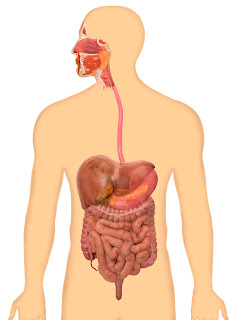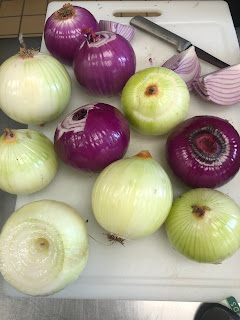Digestion 101
Maybe it’s just me,
but I love talking about digestion. No it doesn’t spur the thought of the most
beautiful of images and to be honest the vocabulary needed to discuss the topic
is…unique. I mean one doesn’t usually throw around terms like bolus, sphincter,
and chyme on a daily basis. None the less digestion is process our body is
going through multiple times a day and many times the process is misconstrued.
Haven’t we all heard something like sugar is like glass shards in the blood
stream? I actually did hear someone say that. So today, I’m going to explain
the biological process of digestion. It may not be the most glamorous of
reads, but I will try to keep things appealing…
 |
| image from here |
We eat with our eyes…
This is true and this
is where digestion begins. When we see something appetizing the process of
digestion is set in motion. Immediately our mouth starts watering which means
it is releasing saliva into the mouth; saliva is the key component to the
chemical digestion of food. Try it for yourself by putting a cracker into your
mouth – do not chew it but let the saliva break it down. You may be surprised
how quickly it goes to work. Your teeth are the key players of mechanical
digestions. Teeth grind and chew food to increase the surface area for more
chemical reactions to take place. Food should be chewed to the consistency of
applesauce for maximum nutrient absorption.
Down the Hatch
Once you swallow the
food, it passes into the esophagus which in my opinion is the unsung hero of
the digestive system. Our esophagus is a thin muscular tube that attaches our
mouth to our stomach. Peristalsis are the involuntary, wave like, muscle
contractions that occur that push our food, called a bolus at this point, into
our stomach. They are strong enough that we can even eat food while upside
down! The base of the esophagus has an esophageal sphincter that closes keeping
food from entering back into the stomach.
The Stomach
The stomach is a
muscular pouch that can hold up to 6 cups of food but both chemical and
mechanical digestion takes place. So if you have ever felt your stomach moving
and grooving after a meal, it probably is by moving, crushing, and churning
your partially digested food. At this point our food is called chyme and is a
thick liquid that will travel into the small intestine. Different foods take
different amounts of time to digest in the stomach. Carbohydrates digest the
fastest (why a sugar high happens) in 1-2 hours, protein is next at 3-5 hours,
and finally fat can take up to 12 hours to digest!
The Small Intestine
From the stomach, the
chyme enters the small intestine where digestive juices such as bile, pancreatic
juice, and intestinal juice help break down nutrients. The surface area of the
small intestine is as large as a tennis court. (There is your fun fact for the
day!) This is the case because the inner walls are covered in billions of
finger like projections called villi. They increase the surface area of the
small intestine so maximum nutrient absorption can take place. After absorption
in the small intestine, dietary fiber and waste are left.
Waste Management
Our body’s waste
management is regulated by the Large Intestine and it is very resourceful. In
the large intestine, all the water is removed from the digestion process and
what is left is flushed down the toilet.
Pretty fascinating
right? Now, I promise I won’t say pancreatic juices in any future articles.


Comments
Post a Comment